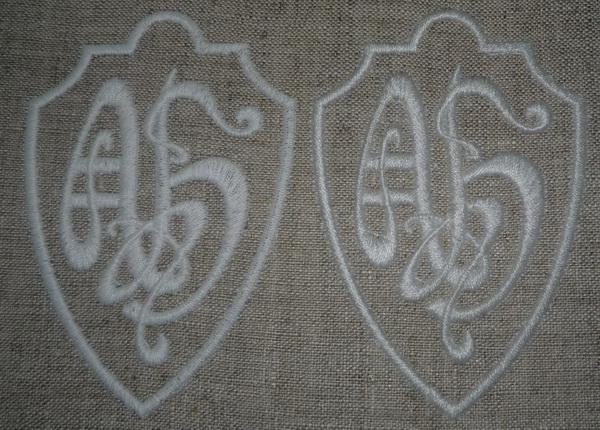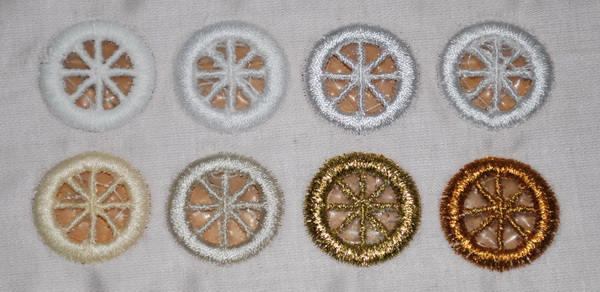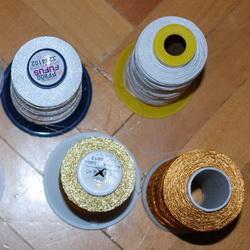Original text by: Marina Belova
Now that I've come close to creating cutwork and lace, I encountered a serious problem: how does one choose the right type of thread for such projects? Should I select the threads according to the design or, on the contrary, to select the design according to the particular threads?
I've noticed before that threads identical in composition, but of different brands lie down in different ways, and the embroidery has a different look. The embroidery will look completely different if you just change a spool. On the weekend I embroidered a cutwork design using the Chinese cotton thread #30. And after the test run the bridges seemed rather untidy.

And the reason was not only the embroidery sequence I'd created. I set a very low density; as for the bridges, I made them a bit too thick, but it was not critical. It was how the threads performed, the way they lay down on the fabric or a water soluble stabilizer, that was the matter. It didn't dawn on me until I had remembered that I had once embroidered a simple design with different types of threads and that the result had vividly demonstrated me the contrast between their quality. Chinese cotton thread on the left and German on the right:

So I decided to make a comparison for my own benefit, to learn how different types of threads I owned performed with different stitch parameters — the threads that could be potentially used for cutwork and FSL.
Here are the threads I picked out for the test:

I'll name them for you.
The upper row from left to right:
- WonderFil Chinese cotton thread #30
- Gunold German cotton thread #30
- Fufu's Taiwanese polyester #40
- WonderFil Chinese rayon #40
The lower row from left to right:
- Amann German polyester #40
- Gunold German rayon #40
- Rheingold German metallic thread #40
- Nitex Chinese metallic thread #40
I made a very simple embroidery sequence for all of them (the density for cotton threads was 20% lower than that for the ordinary ones):

I embroidered different colors in the same order as the spools on the photo above. And of course what I got was an embroidery of varying quality; the difference was especially noticeable before I washed away the water soluble film and cleaned the fabric:

Here is the fabric already washed and dried:

As you can see on that photo:
2 of the cotton threads gave different performances not only in bridges, but in satin columns around the openings. German threads made thicker bridges and very smooth columns. One might think that the density for this type of thread can be lowered even more. As for the Chinese threads, they were a disappointment in all cases: they didn't lie down smooth, and they made uneven bridges.
Metallic threads seem to have given the similar performances.
Taiwanese and German polyester threads were different, too — the German one made slightly thinner and looser bridges with less luster, which was good, because I don't like my cutwork to gleam.
Chinese rayon thread gave an atrocious performance — it broke all the time, especially on bridges, though the end result looks better than the one embroidered with German rayon thread. German rayon thread made loose and ugly bridges.
So in the end it all amounts to this: no matter however much the manufacturers overpraise the quality of their goods, the crucial point will always be the look of the embroidery and the usability. And you'll always have to set the design parameters according to the thread you have. To my own personal regret.
Maybe the bobbin thread is a partly responsible for that as well? Perhaps, someone could suggest the other influences on the quality of the embroidery in our case?
Edited by Irina




There are no reviews to display.